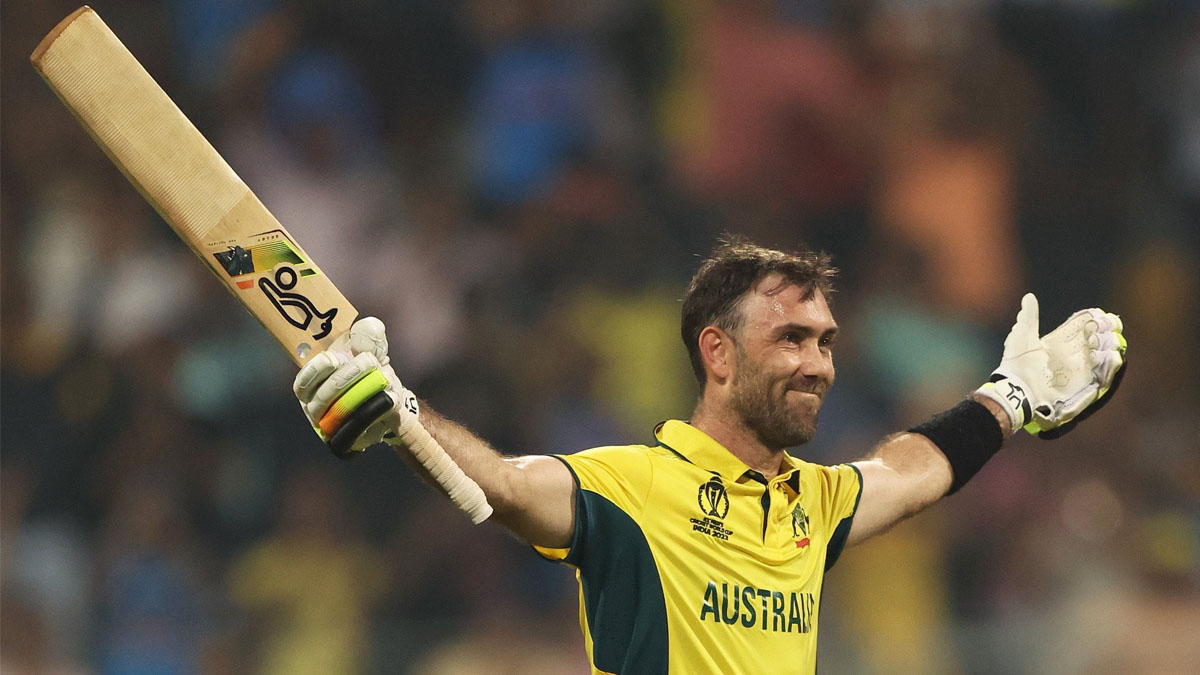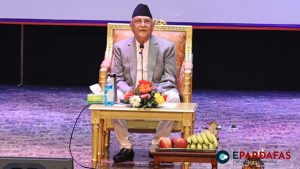
An Extraordinary Double Century Made in Immense Pain

Miracles are rare in the world of sports, a realm where strength, skill, and intelligence typically reign supreme. However, every so often, a moment occurs that transcends the boundaries of the ordinary, a moment that leaves us awestruck and inspired. Glenn Maxwell’s incredible performance at the Wankhede Stadium in Mumbai on a fateful Tuesday was one such moment. It was a display of unparalleled courage, as he battled through immense pain to etch his name in the annals of cricket history with an extraordinary double century.
In a thrilling innings that left the cricketing world spellbound, Maxwell defied both his physical limitations and conventional expectations. Despite being unable to stand on his feet, run, or move his legs, he unleashed a barrage of extraordinary shots. Two sixes in the last four balls, followed by a four and yet another six, left the spectators in sheer disbelief. He achieved this feat while staying rooted at the crease, completing his double century and, in doing so, saving Australia from a looming defeat.
Maxwell’s incredible performance didn’t just secure a victory; it set a new benchmark in the world of cricket. An unbeaten 201 runs off just 128 balls, including ten fours and three sixes in the first hundred runs, and an astonishing seven sixes and 11 fours for the next 101 runs, showcased his remarkable prowess. Throughout his innings, he took on Afghanistan’s fast bowlers and spin bowlers, all the while refusing to let moments of pain and discomfort overwhelm him.
Glenn Maxwell, known as “Mad Maxi” in the cricketing world, is no stranger to moments of brilliance. Despite early flashes of his talent in Australian cricket, consistent international success had eluded him. Nevertheless, his occasional brilliance ensured his place in Australia’s One-Day International (ODI) team for a decade.
At the Wankhede Stadium, Maxwell exhibited the full spectrum of his batting skills, fulfilling the long-standing expectations of cricket enthusiasts worldwide. Moreover, his record-breaking innings established him as the highest-scoring batsman ranked sixth or lower in international cricket.
Maxwell’s remarkable achievement extended further as he became the first batsman to score a double century in ODI cricket without opening the innings. Prior to this, all double centuries in ODI cricket had been attributed to openers. Furthermore, this historic inning marked the first time an Australian batsman had reached a double century in ODI cricket.
Maxwell’s journey at the Wankhede Stadium began in adversity. When he took the crease against Afghanistan, Australia was teetering at just 49 runs for four wickets, with Azmatullah having taken two wickets in the first two balls of the ninth over. Maxwell’s entry was under immense pressure, as the Australian score stood at a perilous 92 runs for seven wickets when he reached 26 runs.
With the entire stadium rallying behind Afghanistan, anticipating a historic victory, it was Maxwell who emerged as the savior. His unwavering faith and resolve breathed new life into Australia’s prospects. Despite the odds stacked against him, he displayed immense courage and determination.
As Maxwell’s innings progressed, he faced a series of challenges, including missed catches at square leg and mid-off. However, he persevered and rapidly reached his century in just 76 balls, while the rest of the Australian team struggled to find their footing.
After reaching his century, the true character of Glenn Maxwell shone through. Known for his flamboyant batting style, he had occasionally faltered in high-pressure situations. However, in this game, despite experiencing pain and discomfort, he remained resolute.
A cramp in his left leg, which required the team physio’s intervention, couldn’t deter Maxwell. Australia was now just about 100 runs away from victory, and his contribution was invaluable. His left leg issue soon turned into a back problem, and he was seen on the ground multiple times.
There were moments when Maxwell stumbled while taking runs, appearing to be in pain as he reached the crease. Standing on his feet became an increasingly formidable challenge. At one point, it seemed as though Maxwell might need to be carried off on a stretcher, but he defied the odds, getting back on his feet and leaving Adam Zampa, next in line to bat, waiting in the pavilion.
Glenn Maxwell’s journey in the cricketing world has been a rollercoaster. His early success came to the fore in the 2010-11 season, where he scored the fastest half-century in Australian domestic cricket in just 19 balls, earning a place in the ODI squad.
In the 2015 World Cup, he played a century in just 51 balls against Sri Lanka, setting a new record as the fastest century by an Australian batsman at the time. Known for his unconventional shots early in his career, his penchant for unorthodox strokes later became a weakness, resulting in criticism for playing careless shots.
Despite these setbacks, Australian cricket continued to harness Maxwell’s talent. He received support from fellow players and sought help from psychiatrists to overcome his struggles. Although his journey featured inconsistency, his unique talent made him a sought-after player in leagues worldwide, particularly in the Indian Premier League (IPL), where he was auctioned for significant sums.
With his extraordinary innings at the Wankhede Stadium, Glenn Maxwell has left an indelible mark in the cricketing world. He has shown that with immense courage, unwavering determination, and a relentless spirit, the boundaries of human potential can be pushed beyond the imaginable. This World Cup will undoubtedly be remembered for Maxwell’s remarkable achievement, an extraordinary double century made in the face of immense pain, a testament to the indomitable human spirit in the world of sports.












Comments